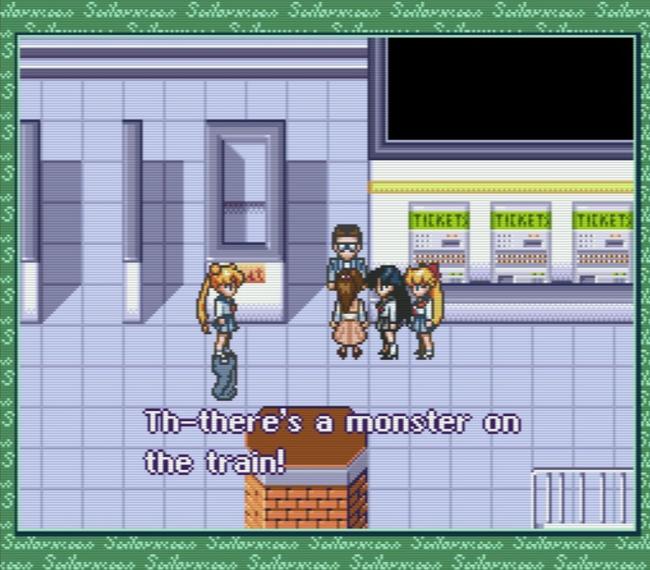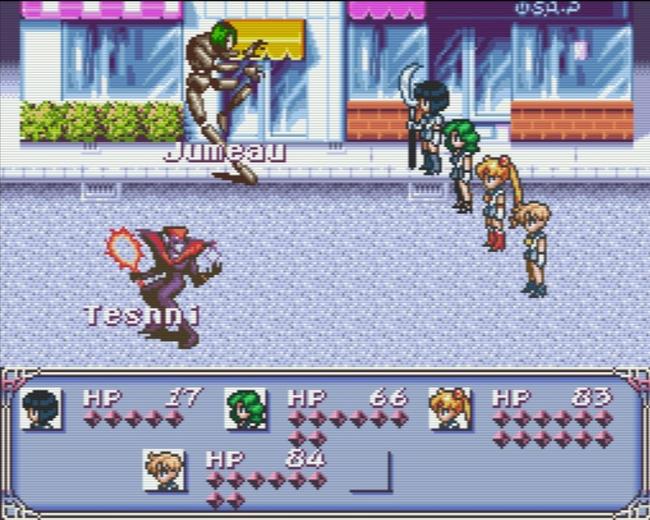
How Sailor Moon introduced me to fan translations
These days, it seems like most popular anime series get some sort of game tie-in, whether it be a full-fledged console game, mobile gacha experience, or something in-between. From the days when it felt as if only Dragon Ball Z fighting games were licensed in the West to now, where games like Attack on Titan have an entire catalog of games or series like Sword Art Online have as many seasons as game titles, the types of licensed tie-ins and how we play them continues to change. Growing up during the 1990s in the US, though, we weren't always feasting. Back then, my anime exposure was limited to Dragon Ball and Sailor Moon. Anime games were things I mostly looked at in the import pages at the back of Electronic Gaming Monthly.
It was a total surprise to find an SNES RPG based on Sailor Moon among the sea of beat 'em ups, fighting, or puzzle games, none of which ever made the trek to American shores. It was a shock, though, to learn there was a complete fan translation of the game produced by a group known as Bishoujo Senshi Translations. This was my first exposure to fan-translated games, releasing me into a little corner of the internet where hardcore fans poured hours of effort into bringing games to a wider audience. Playing the game again in 2023, I can't help but wish this game received the same treatment as Live-a-Live or more obscure titles finding new life - and for the first time, an official localization - on modern consoles.

Sailor Moon: Another Story is a turn-based RPG for the Super Nintendo released in Japan on September 22, 1995. It takes place during the intermission between the series' third and fourth seasons. Another Story is an original tale with new villains, the "Opposition Guardians" who come from the 30th Century to alter the fates of various characters across multiple timelines. Their goal is to retrieve the Silver Crystal, the source of Sailor Moon's power. The game's opening hours feature the return of numerous enemies from the show's first seasons, providing a nice bit of fan service that is germane to the plot. Aside from fan-favorite characters and locations, Another Story features a bit of globetrotting, with the inner guardians traveling separately across the world to retrieve stone fragments during the game's second act. The story is engaging enough, feeling like one of the show's filler arcs when transitioning between series.
The game features a standard turn-based combat system with five of ten party members allowed in combat at any given time. Here's where the game gets interesting, as it has a technique combo system that reminds of Chrono Trigger. Players can deploy techniques involving arrangements of guardians in pairs or groups. Series fans will delight in discerning new combinations in the menu, finding attacks that are featured in the manga, anime, or original attacks just for the game. There are over 40 link techniques to discover and use. While the game can be difficult - and the encounter rate can be alarming - the combat is easily a highlight.

It's supported by a great 16-bit anime approach to graphics and music. There is lovely sprite work and character art, buttressed by music compositions from the series and even audio clips from the voice actors, a rare feature in SNES RPGs. Most enemies are instantly recognizable to series fans, and the boss characters are particularly well-drawn. These efforts help the game capture the essence of the series, giving a sense of authenticity sometimes lacking in tie-in games.
It's a wonder, really, that there exists a fan-translation of this game at all - and one that has been completed for nearly twenty-five years. I completely stumbled upon this game by chance in the relatively early days of the internet, the same way I stumbled upon fansubs and even a late 1990s fandub of the first four episodes of Sailor Moon S before they aired in the US. My tweenage foray into emulation at that point was for games I already owned and played in English; the concept of playing a game in English despite never coming out in America made me feel like I was in on a little secret. "You've never heard of this game? That's right, it's actually never been released in this whole country," I imagined telling friends who never asked. It's even more of a surprise to learn there is a second fan translation of the game, released in 2019 featuring revisions to the translation and even some tweaks to encounter rate and experience points to smooth out the game.

Another Story led me into the world of fan translations, eventually finding completely playable and readable versions of RPGs of other series I would later discover, like Magic Knight Rayearth and Tenchi Muyo! These RPGs are well made and full of that 90s charm that so many new games chase as inspiration. It was a treasure trove of licensed IP fare that I otherwise would never have uncovered. I soon discovered other RPGs that were either partially or fully translated, including Final Fantasy V, a few years before its first American release on the PlayStation. In the more than twenty years since then, I've played through plenty of games that never saw a counter at GameStop - including Treasure of the Rudras or Bahamut Lagoon. Because of Sailor Moon, I discovered a seemingly endless supply of games I could experience even if companies felt they wouldn't find an audience in the West. Perhaps they were right, but I am always grateful for the efforts of fan-translators who helped those games find an audience in me.
As we've seen, plenty of previously unreleased now-retro games have found new life on modern consoles, including Live-a-Live, another SNES classic. We've seen ports and remakes of games like Seiken Densetsu 3, or official releases of Romancing SaGa 2 and 3. Even more abstract fare like Moon has seen a localization and release after all this time. While I understand Sailor Moon: Another Story might be trickier to license, the time is right given the series reboot project has been completed this year with the recent release of two films covering the end of the manga.

Nostalgia is more popular than ever as we continue to swim in remakes, ports, remasters, and even re-imaginings. There's something sweet about a game finding an audience, many years later. I love the idea of a casual Sailor Moon fan stumbling upon this game in the eShop, eager to play and download this game they had no idea existed five minutes prior. Maybe it's because I remember when I had an experience like my own in 1999 - and still look back fondly on the world of fan-translated games it introduced me to.